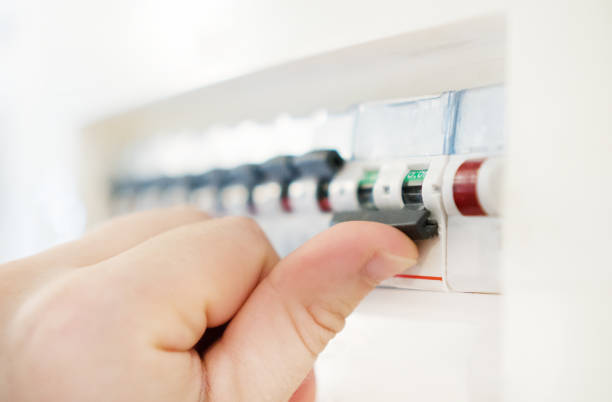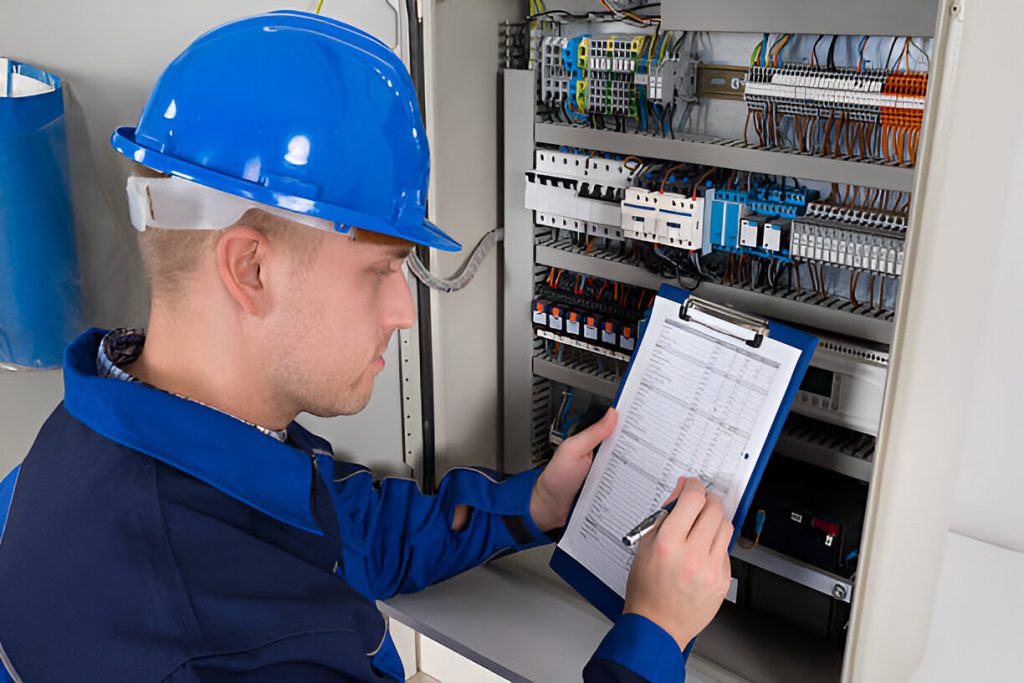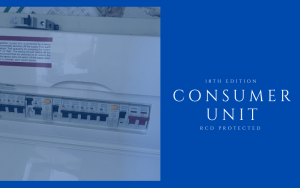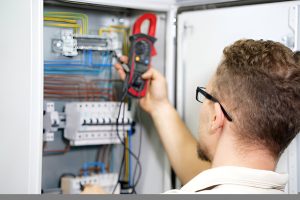In addressing the issue of a frequently tripping fuse box, it is imperative to consider both common and less obvious factors that may contribute to this persistent problem. Overloading circuits, aging infrastructure, or defective electrical devices can often be culprits. Methodically testing each circuit and connected appliance can reveal overloads or short circuits, yet, subtler issues like environmental factors or improper installation practices sometimes only emerge through professional diagnostic tools and expertise. Identifying these can be challenging, and further exploration into advanced troubleshooting techniques could unveil insights that prevent future disruptions, ensuring both safety and functionality in your electrical system. Let’s understand Troubleshooting a Fuse Box That Frequently Trips.
Understanding the Reasons Behind a Tripping Fuse Box
A tripping fuse box often signals underlying electrical issues that require immediate attention to ensure safety and functionality within a residential or commercial building. Understanding the reasons behind such disruptions can be complex, requiring a deep dive into the nuances of electrical systems.

One common cause is an imbalance in the electrical load. Each circuit is designed to handle a specific maximum load, and exceeding this can lead to circuit overload, tripping the breaker as a protective measure. This often occurs when high-demand appliances are used simultaneously on a single circuit that is not adequately rated for such a load.
Appliance malfunction is another critical factor. Faulty or aging appliances can develop internal defects that lead to excessive current draw, triggering the fuse box. Regular maintenance and timely replacement of appliances can mitigate this issue.
Wiring issues, such as frayed wires, loose connections, or improper wiring installations, also contribute to tripping. These not only pose a risk of overloading circuits but are also fire hazards.
Lastly, moisture intrusion can cause short circuits. Exposure of electrical components to water from leaks or condensation can lead to unexpected electrical behavior, necessitating waterproofing and routine checks for moisture sources around the electrical installations.
Top Reasons Your Fuse Box Keeps Tripping
Persistent tripping of your fuse box can be attributed to several key factors that disrupt the safe operation of your home’s electrical system.
The first and most common reason is circuit overload. This occurs when too many appliances draw power simultaneously from a single circuit, exceeding its capacity and causing the safety mechanism to shut off the power to prevent overheating or fires.
Faulty appliances are another significant culprit. Appliances with damaged or malfunctioning electrical components can create unexpected power surges that trip the fuse box. Regularly inspecting and maintaining your appliances can help mitigate this risk.
Damaged wiring within your home can also lead to frequent tripping. Over time, wiring insulation can deteriorate, or rodents and other physical impacts can expose wires, creating dangerous short circuits. These conditions not only pose a risk of tripping but are also serious fire hazards.
Additionally, external factors such as weather changes can influence your electrical system. Lightning strikes or heavy rains can cause sudden surges or breaks in power lines, impacting your home’s electrical stability.
Lastly, outdated electrical systems that haven’t been upgraded to handle modern electrical loads are prone to frequent tripping. Upgrading your system can provide a more robust solution to this issue.
Simple Steps to Identify the Source of the Problem
Begin troubleshooting your fuse box issues by first determining which circuit is causing the problem. This involves a systematic examination of each circuit to isolate and identify specific faults such as circuit overloads, appliance issues, faulty wiring, short circuits, or weather impacts.
Following these steps can pinpoint the root cause:
- Map and Label Circuits:
Start by switching off and labeling each circuit from the fuse box. Methodically turn each circuit back on to see which triggers the fault. This process helps in identifying if a particular area or appliance is linked to the issue. - Inspect Appliances and Outlets:
Once the problematic circuit is identified, scrutinize all appliances and outlets associated with it. Look for visible signs of damage or wear. Unplug all appliances before resetting the circuit to check if the overload persists. This might indicate wiring issues or the need for appliance repair. - Examine Weather Conditions:
Consider external factors such as recent storms or moisture that could contribute to short circuits or wiring problems. Weather-related impacts often go unnoticed but can significantly affect electrical systems.
Adopting a meticulous and analytical approach will not only clarify underlying issues but also guide effective resolution strategies.
A Guide to Safely Resetting Your Fuse Box
Once you have identified the problematic circuit and are ready to reset your fuse box, it is crucial to approach this task with caution and precision to ensure safety and effectiveness.
Begin by ensuring all devices connected to the circuit are turned off to prevent any sudden spikes in electrical load when the circuit is reactivated. This step is vital in avoiding potential circuit overload and further complications.
Next, locate your fuse box and ensure you are not standing on a wet surface to avoid any risk of electrical shock. Using a flashlight if necessary, identify the problematic fuse; it will typically appear different from others—either discolored or visibly damaged.
Carefully remove the fuse, checking for any signs of damage or wear. If the fuse is intact, reinsert it securely into the slot.
Before flipping the switch to reactivate the circuit, double-check that the area is clear of any unnecessary personnel and confirm that all safety precautions are in place. This includes verifying that the electrical load is appropriately balanced and that no single appliance is demanding excessive power.
Adhering to these emergency procedures and fuse box maintenance protocols helps ensure operational safety and prolongs the life of your electrical system.
Signs It’s Time to Call a Qualified Electrician
Recognizing the right moment to call a qualified electrician can prevent minor issues from escalating into major hazards.

When dealing with persistent fuse box issues, understanding certain indicators is crucial. Here are three definitive signs that professional help is needed:
- Frequent Fuse Trips: If your fuse box trips repeatedly, this could be a symptom of deeper electrical problems, such as circuit overload signs. This suggests that your current system may not be equipped to handle your home’s electrical demand, or there could be a fault in the home wiring basics.
- Signs of Electrical Overheating: Discoloration around your fuse box, a burning smell when appliances are in use, or warm outlets are critical indicators. These symptoms point toward inadequate surge protection devices or potential failures in electrical safety practices.
These conditions require immediate attention to prevent fire risks.
- Complex System Upgrades: Installing new appliances or systems that demand more power can necessitate upgrades to your electrical panel. An electrician can provide crucial fuse maintenance tips and ensure that your system conforms to safety codes and can handle increased loads effectively.
In such situations, leveraging the expertise of a certified professional not only ensures safety but also aligns with best practices in electrical maintenance.
Tips for Preventing Future Fuse Box Trips
To minimize the occurrence of future fuse box trips, it’s essential to implement preventative measures that ensure the electrical load is evenly distributed across your system. Effective electrical load management can significantly reduce the risk of overloading circuits. This involves understanding the capacity of each circuit and ensuring that no single circuit is burdened by too many high-power appliances simultaneously.
It’s advisable to calculate the total wattage that each circuit can handle and plan appliance usage accordingly.
Consider circuit breaker upgrades, especially if your current system frequently fails. Upgrading to modern circuit breakers can offer more reliable performance and better handling of high loads compared to older fuse-based systems.
Additionally, integrating surge protection devices can shield your electrical system from voltage spikes and prolong the life of your electrical appliances.
Adjusting appliance usage habits also plays a crucial role. Avoid running multiple high-energy-consuming devices at the same time on the same circuit.
Implement seasonal maintenance checks to ensure all aspects of your electrical system are functioning optimally and safely. This proactive approach not only prevents future trips but also enhances the overall safety and efficiency of your home’s electrical infrastructure.
The Importance of Routine Electrical Inspections for Safety
Regular electrical inspections are a critical component of maintaining a safe home environment. These inspections serve as fundamental exercises in risk assessment, directly contributing to electrical safety through meticulous scrutiny of your home’s electrical system.
By engaging in routine maintenance, homeowners can ensure system efficiency and effective hazard prevention.
The benefits of routine electrical inspections include:
- Prevention of Electrical Hazards: Inspections identify potential safety risks such as outdated wiring, overloaded circuits, and faulty electrical panels that could lead to fires or electrical shocks.
- Enhancement of System Efficiency: Regular checks help maintain optimal performance of electrical systems. This includes ensuring that all connections are tight and corrosion-free, which can improve the longevity and functionality of the electrical infrastructure.
- Cost Savings in the Long Run: Early detection of issues prevents major repairs or replacements in the future. By addressing minor problems during routine inspections, larger expenditures caused by significant damages or system failures can be avoided.
For homeowners aiming to master their residential safety, understanding the pivotal role of these inspections is essential.
They not only secure a safe living environment but also fortify the home against potential electrical failures.
Conclusion
In conclusion, frequent tripping of a fuse box necessitates a methodical approach to identify and rectify the underlying issues. Effective troubleshooting requires mapping circuits, inspecting appliances, and cautiously resetting the system to ensure stability. Persistent problems or signs of electrical damage should prompt immediate consultation with a qualified electrician. Preventative measures and routine electrical inspections are crucial to safeguarding against future disruptions and enhancing the safety and reliability of the electrical system.










